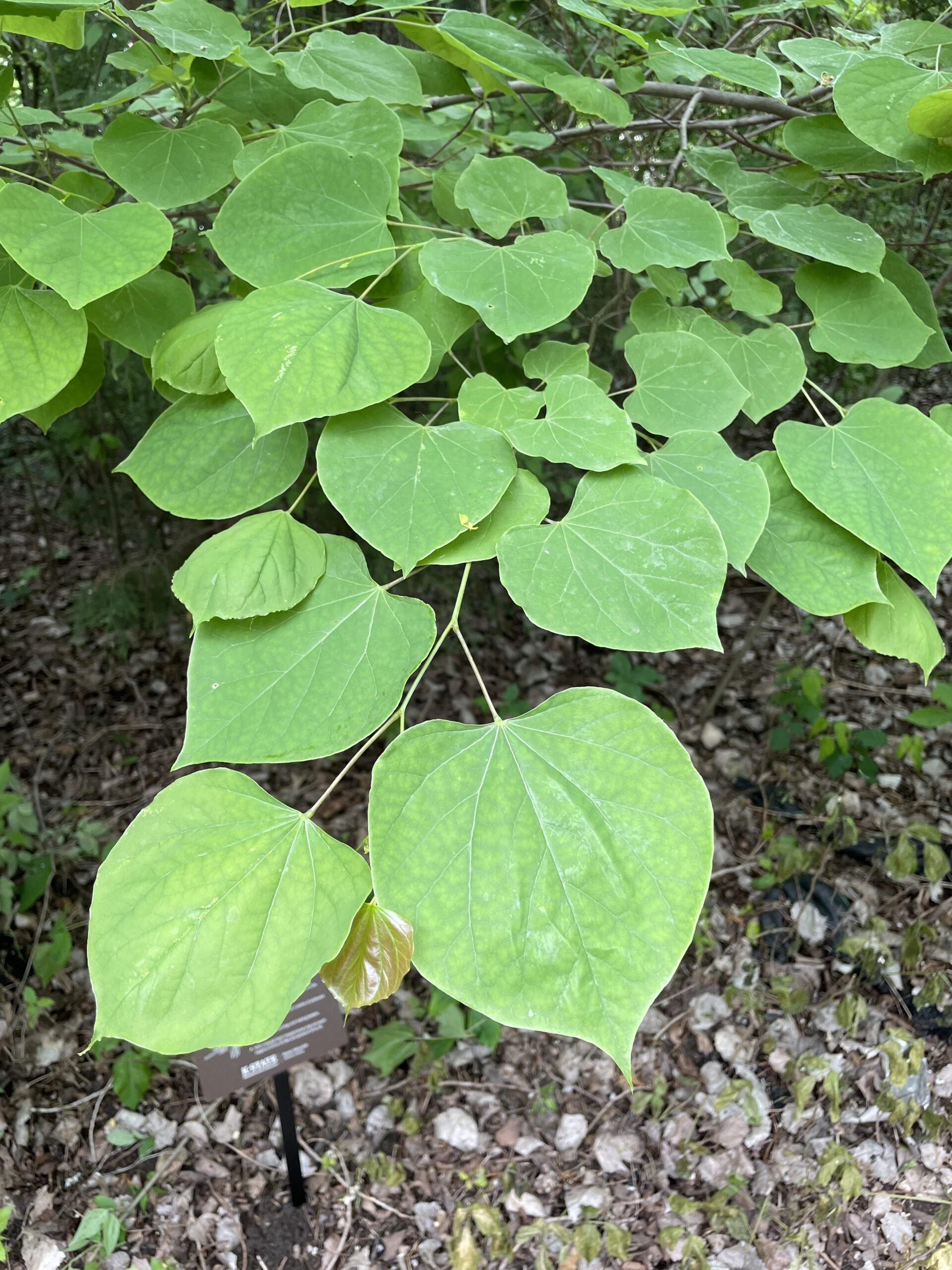Eastern Redbud
Cercis canadensis
“Redbuds make me happy… If one redbud is a show stopper, then a grouping of them in bloom is truly a joy to behold.”

Redbud leaves
 The Alabama, Cherokee, Delaware, Kiowa, and Oklahoma were among the Native American tribes that used eastern redbud for various purposes. The bark was made into a tea to treat whooping cough. Taking cold infusions of the roots and inner bark treated fevers and congestion. An infusion of the bark was used to treat vomiting and fever. During winters, the plants were used for firewood. Because it is one of the first plants to flower in the spring, the blossoming branches were brought into the homes to “drive winter out.” Children were “fond of eating the blossoms” of eastern redbud.1
The Alabama, Cherokee, Delaware, Kiowa, and Oklahoma were among the Native American tribes that used eastern redbud for various purposes. The bark was made into a tea to treat whooping cough. Taking cold infusions of the roots and inner bark treated fevers and congestion. An infusion of the bark was used to treat vomiting and fever. During winters, the plants were used for firewood. Because it is one of the first plants to flower in the spring, the blossoming branches were brought into the homes to “drive winter out.” Children were “fond of eating the blossoms” of eastern redbud.1
The eastern redbud was named the Oklahoma state tree in 19712. It is an under story tree meaning it grows well under larger trees. It is adaptable to clay soil, cold, drought and rocky terrain. It doesn’t like wet feet and regrettably is not a long lived tree. It is low maintenance and not vulnerable to harmful insects or disease.3 It has arching branches, heart shaped leaves which turn yellow in fall and in winter is recognizable by it’s dried seed pods. It is beautiful in natural settings and as a landscape or garden tree, eastern redbuds have many ornamental qualities that are welcomed and appreciated.
The flowers provide nectar for bees and the seeds are are consumed by many songbirds.4
The genus name Cercis comes from the Greek word kerkis, which means weaver’s shuttle, referring to the fact that the seed pod resembles the size and shape of a weaver’s shuttle used to move thread back and forth on a loom. Sometimes called the Judas tree, from its oriental relative of that name, Cercis siliquastrum.5
Why is it named redbud tree? When the tree puts out it’s winter time flower buds they are dark red in color.
